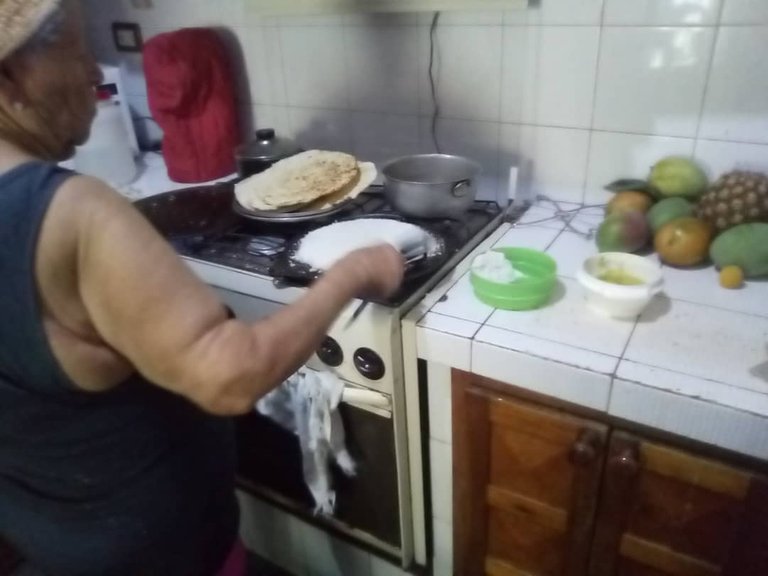


Spanish
Hola, queridos Hivers.
Hoy quiero compartir una realización del casabe. Aquí la mente maestra es mi maita (abuela materna). Ella nació y se crio en el campo, en guigue, estado Carabobo. Por esta razón sabe la preparación del casabe y le gusta hacerlo.
Debo confesar que lleva bastante trabajo, se necesitan varias manos y sobre todo con fuerza, jejeje… en las fotos verán varias personas participando, hasta mi pequeña prima ahijada que está viendo.
Realmente yo no soy muy dada a comer casabe, pero desde que pruebo el que cocina mi maita, me gusta.
Voy a tratar de hacerlo lo más explicativo y practico de ver y entender; así que de una vez te invito a que continúes leyendo y viendo, esta manera familiar de realizar casabe.
El ingrediente que se necesita es yuca. En esta oportunidad se usaron 16 kilos.
Los materiales que se necesitan son: cuchillo, machete, escardilla, rallo, molino, un saco o tela que sirva para exprimir y un colador (creo que se llama manare).
Voy con la preparación:Lo primero es buscar la yuca. En nuestro caso, se busca en el conuco frente a la casa de mi maita, allí se sembró varias matas de yuca. Por esa razón lo que se hace es sacar la mata de yuca para realizar el casabe.
English
Hello, dear Hivers.
Today I want to share a realization of the cassava. Here the mastermind is my maita (maternal grandmother). She was born and raised in the countryside, in Guigue, Carabobo state. For this reason she knows the preparation of the casabe and likes to make it.
I must confess that it takes a lot of work, you need several hands and above all strength, hehehe... in the pictures you will see several people participating, even my little cousin goddaughter who is watching.
I'm not really given to eating cassava, but since I've tasted the one my maita cooks, I like it.
I will try to make it as explanatory and practical to see and understand; so I invite you to continue reading and watching this familiar way of making cassava.
The ingredient needed is yucca. This time 16 kilos were used.
The materials needed are: knife, machete, escardilla, rallo, mill, a sack or cloth that serves to squeeze and a strainer (I think it is called manare).
I go with the preparation: The first thing is to look for the yucca. In our case, we look for it in the conuco in front of my maita's house, where several yucca bushes were planted. For that reason what is done is to take out the yucca bush to make the cassava.
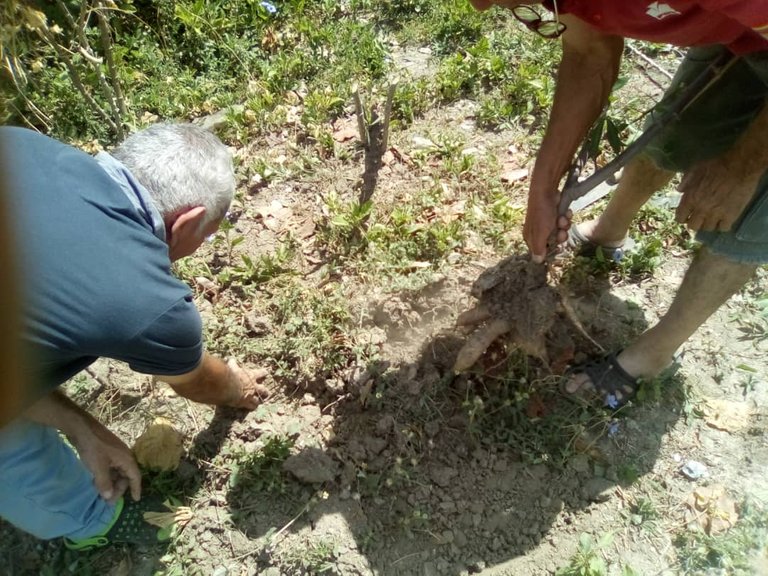
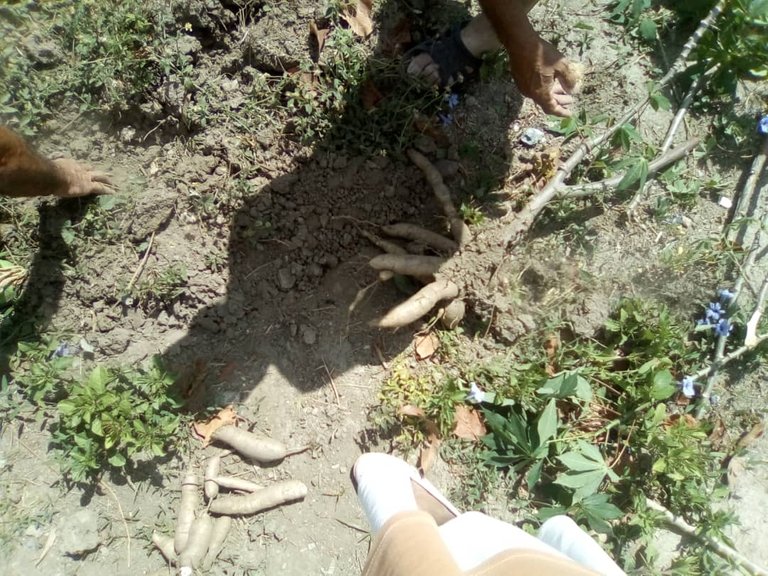
Spanish
Ya con la mata de yuca afuera, es momento de pelar y lavar la yuca, para después agarrar las y comenzar a rallar; se usa el rallo por el lado más grueso.
Luego de que esta toda la yuca rayada, se arma el molino, allí se va a ir metiendo para que salga como una masa.
English
Already with the yucca bush outside, it is time to peel and wash the yucca, to later take them and to begin to grate; the grate is used by the thickest side.
After all the yucca is grated, the mill is assembled, there it is going to be put in so that it comes out as a mass.

Spanish
Continúa el trabajo. Ahora que está todo molido, se va a usar el saco o tela para exprimir esa masa. ¿Por qué se necesita exprimir la masa? Pues para sacar el almidón que contiene la yuca. Para realizar el casabe necesitamos, prácticamente, yuca en polvo, o sea sin almidón.
English
The work continues. Now that everything is ground, the sack or cloth will be used to squeeze the dough. Why do you need to squeeze the dough? Well, to remove the starch contained in the yucca. To make the cassava we need, practically, powdered cassava, that is to say, without starch.
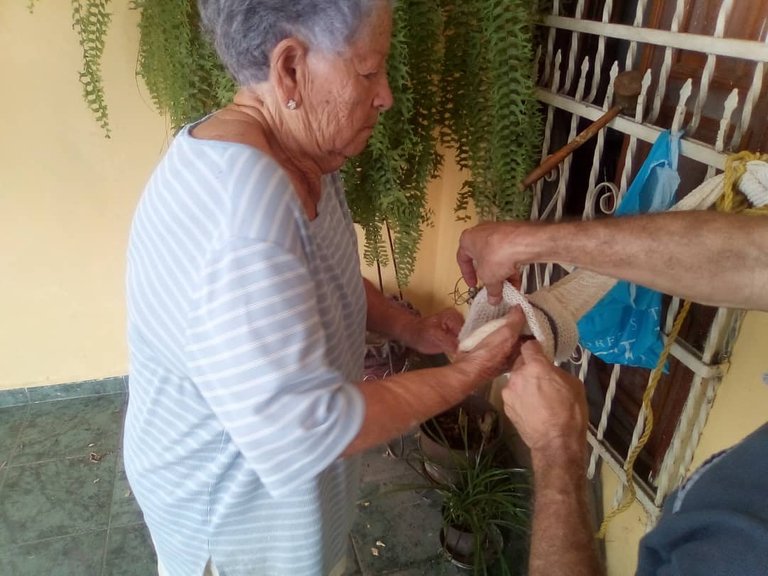
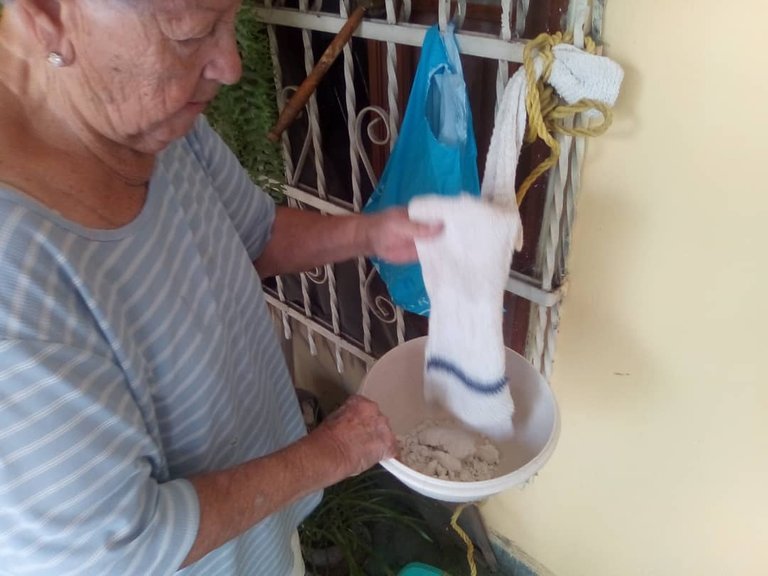
Spanish
Pero esto no es todo, aún falta un paso más, antes de comenzar la cocción. Se trata de cernir la harina de yuca. Realmente lo que usa mi maita, es como un colador grande, tejido como con mimbre, creo que se llama manare. Allí ella echa la harina, le pasa la mano para ir la tamizando.
English
But that's not all, there is still one more step to do, before starting the cooking. This is to sift the cassava flour. Actually what my maita uses is like a big sieve, woven with wicker, I think it is called manare. There she pours the flour, she passes her hand through it to sift it.

Spanish
Ahora es momento de cocinar. Se colocan unos budares a calentar, se le agrega un poquito de aceite, cosa de que no se peque, se le doblan ligeramente los bordes, en lo que se doran un poquito es momento de voltearlos. Y listo.
A mi esta parte no me gusta mucho, me da miedo que se me rompa mientras lo volteo. Porque es algo finito.
English
Now it is time to cook. Put some budares to heat, add a little bit of oil, so that they don't get too small, fold the edges slightly, and when they get a little bit brown it's time to turn them over. And that's it.
I don't like this part very much, I'm afraid it will break while I flip it. Because it is a little thin.
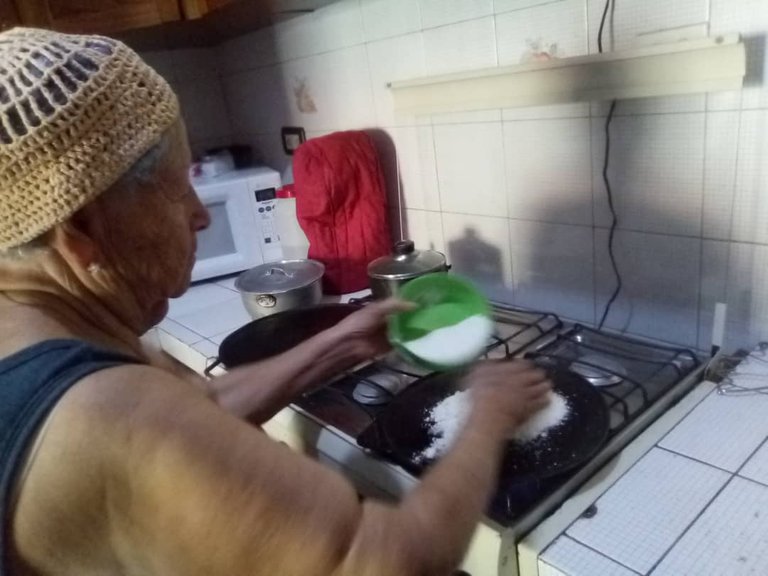
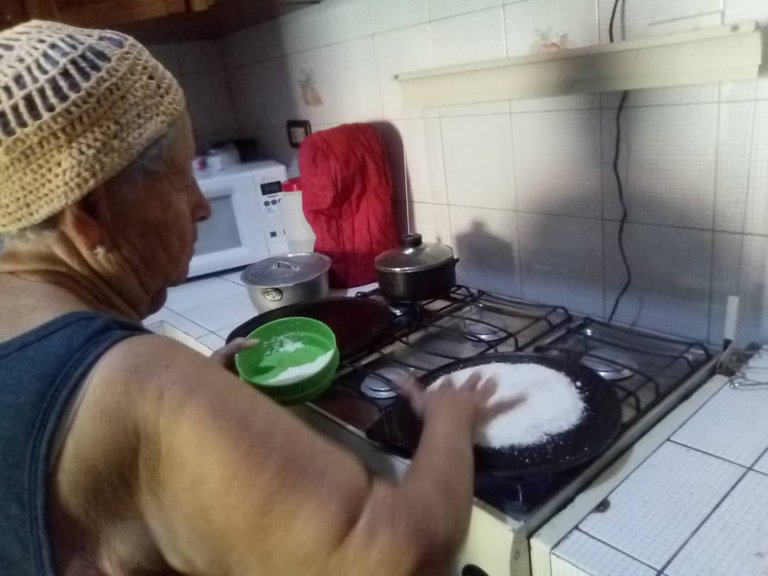

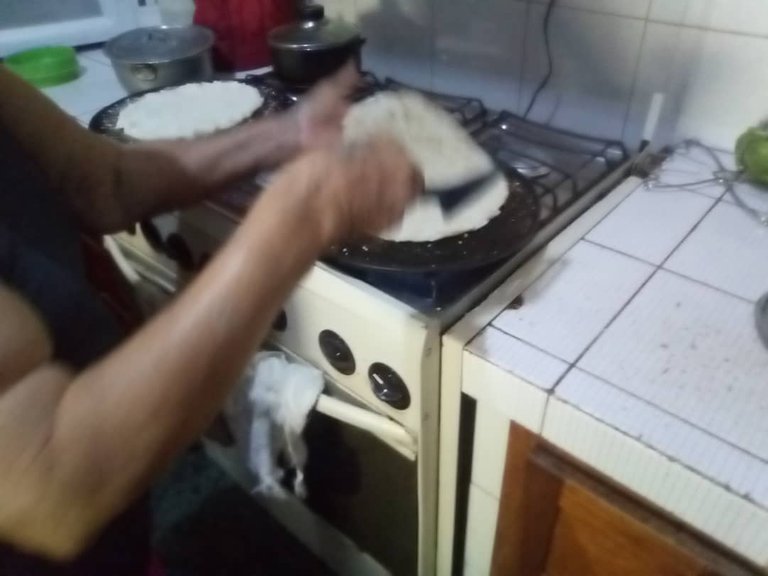
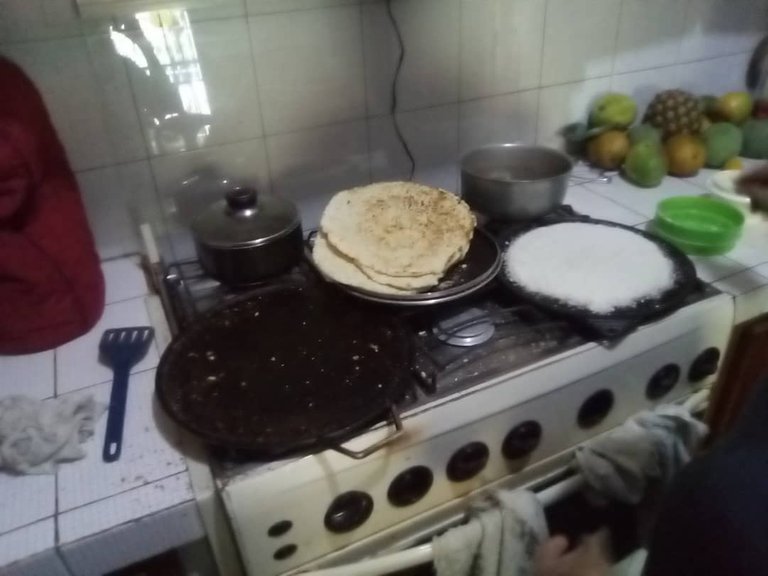

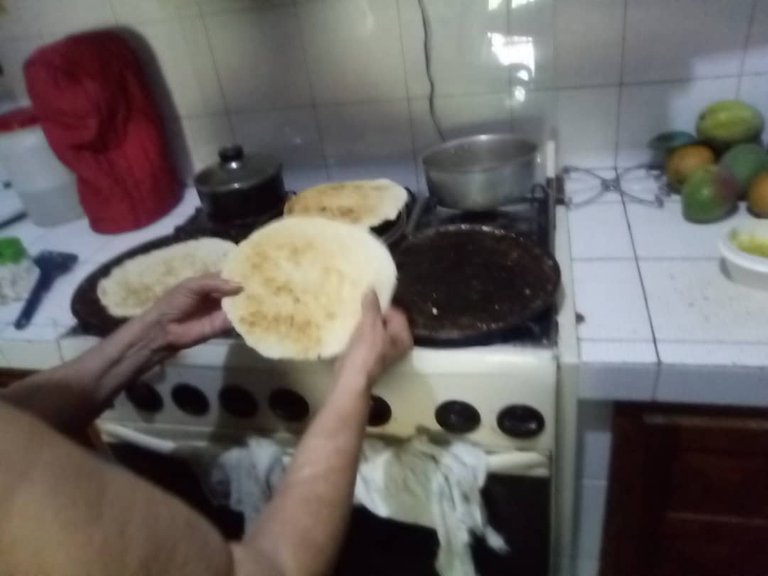
Spanish
En esta oportunidad se hicieron alrededor de 40 casabes. Y se decidió hacerlos en la cocina, porque lo normal es usar un fogón, así quedan muchísimo más sabrosos.
Bueno te agradezco que te hayas quedado a ver y leer esta pequeña realización de casabe. Nos vemos en una próxima publicación.
English
This time around 40 casseroles were made. And it was decided to make them on the stove, because it is normal to use a stove, so they are much tastier.
Well, I thank you for staying to watch and read this small realization of cassava. See you in a future post.

Imágenes de mi propiedad
Texto traducido en Deepl
Baner y separador elaborado en Power point